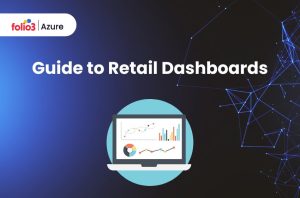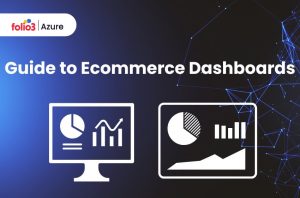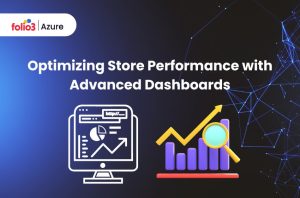Table of Contents
ToggleIn an industry where time is money and efficiency is king, supply chain and logistics professionals are constantly seeking new tools to streamline their operations. The adoption of analytics and business intelligence (BI) tools offers unprecedented insights and the capacity to optimize every aspect of logistics, from vendor management to last-mile delivery.
One powerful tool in the modern logistics professional’s arsenal is the dynamic dashboard – a real-time window into the complex web of activities that define a supply chain.
Introduction to Logistics Dashboards
A logistics dashboard is more than just a collection of charts and graphs; it’s a gateway to understanding and steering the logistics systems that underpin countless businesses worldwide.
By visualizing a wide array of data, including key performance indicators (KPIs), a dashboard empowers leaders to make data-driven decisions that positively impact the bottom line.
Dashboards can be customized to match the unique goals and operational challenges of any logistics operation. But what exactly should they include, and how can businesses ensure they are using them to their full potential?
The Importance of Analytics in Logistics
Before we can discuss designing or using a logistics dashboard, understanding the significance of analytics is crucial. In the logistics industry, where unpredictability is a constant factor, analytics provide a way to predict, adapt, and optimize.
Through sophisticated data analysis, logistics companies can:
- Forecast demand more accurately
- Improve resource utilization
- Reduce excess inventory
- Optimize route planning
- Enhance customer service
Without analytics, decisions are often made based on intuition or historical patterns. In contrast, analytics enables companies to parse massive datasets and apply those insights to the present and future, leading to greater precision and better outcomes.
Benefits of Analytics Dashboards in the Logistics Industry
The adoption of dashboards in logistics operations provides a litany of benefits:
- Real-time visibility: Dashboards can provide a live, up-to-the-minute view of logistics KPIs, giving users instant insight into what’s happening and where attention is required.
- Mobile Access: Busy logistics managers can keep a finger on their operations from anywhere, thanks to the mobile-friendly versions of most dashboard platforms.
- Decision support: By centralizing critical data, dashboards can help guide strategic decisions that align with business goals.
- Improving response times: With real-time data, logistics are now more agile, allowing faster responses to changes, such as delays or spikes in demand.
The true value of a logistics dashboard lies in the way it consolidates and presents data, transforming raw information into actionable intelligence.
What Should a Logistics Dashboard Include?
An effective logistics dashboard blends art and science, balancing the need for comprehensive data with a design that is easy to understand and interpret. It should include a mix of these essential components:
- KPIs: The heartbeat of any dashboard, KPIs are the metrics that directly relate to the success and management of logistics operations. These might include on-time delivery rates, warehouse capacity, or inventory accuracy.
- Data Visualizations: Humans process visuals faster than text, making charts, graphs, and maps invaluable for quickly digesting complex information sets.
- Trends: By tracking historical data, logistics professionals can identify patterns that inform better operational strategies.
- Forecasting: Predictive analytics can aid in strategic planning, helping logistics experts to anticipate market shifts and operational needs.
- Alerts: Proactive notifications for events such as critical inventory levels or service level agreement (SLA) breaches can help to prioritize actions and maintain service excellence.
Application of Analytic Dashboards in the Logistics Industry
The application of analytic dashboards is as diverse as the logistics industry itself. For instance:
- In the transportation sector, a comprehensive dashboard can integrate data from vehicles and third-party logistics (3PL) partners to maintain a fleet that is responsive to demand.
- Warehousing KPI dashboards can monitor everything from the throughput of specific items to the labor efficiency of the workforce.
- A broader supply chain dashboard can ensure smooth coordination of the many links in the supply chain.
- The pick & pack scorecard gives visibility on errors and can improve the accuracy and efficiency of warehouse operations.
- The COO KPI scorecard can link various logistics metrics to larger company performance indicators, ensuring that logistics are aligned with the overall company strategy.
Logistics Dashboard Examples
The best way to understand the utility of logistics dashboards is by looking at concrete examples:
1. Transportation Dashboard
In a transportation dashboard, you may visualize truck fuel efficiency, driver performance, and real-time traffic data to facilitate better routing decisions.
2. Warehouse KPI Dashboard
A warehouse KPI dashboard could include on-time shipping, order cycle time, and inventory to sales ratios to optimize warehouse strategies.
3. Supply Chain Dashboard
The supply chain dashboard would synthesize data from multiple sources to provide end-to-end visibility, helping to manage inventory levels, demand, and supplier performance more effectively.
4. Pick & Pack Scorecard
The pick & pack scorecard focuses on the accuracy and efficiency of warehouse operations, essential in high-volume, high-precisions industries such as electronic parts or pharmaceuticals.
5. COO KPI Scorecard
For a more comprehensive view, a COO KPI scorecard tracks metrics that cross into other domains, such as finance or customer service, reflecting logistics’ impact on the company as a whole.
How to Build a Logistics Dashboard
Building a logistics dashboard is not a one-size-fits-all proposition. Every organization has different configurations and goals. Here’s a high-level approach to get you started on developing your own dashboard:
1. Define the Purpose: What are your main objectives? Are you looking to reduce lead time, improve order accuracy, or optimize inventory management? Define clear goals for your dashboard to measure.
2. Identify Key Metrics: Once the goals are set, determine which KPIs are most relevant to measure success and improvements in those areas.
3. Gather and Validate Data: Data accuracy is paramount. Ensure that the data you collect and feed into your dashboard is clean, reliable, and representative of the metrics you’re measuring.
4. Choose the Right Dashboard Tool: There are many dashboard tools available, each with its strengths. Select a tool that aligns with your data sources, team’s skill set, and budget.
5. Design for Your Users: Keep the end users in mind. A warehouse manager may need a different view of the data than a transportation supervisor. Tailor the dashboard to their needs and make it intuitive and easy to read.
6. Implement and Test: Roll out the dashboard in a controlled environment and gather feedback. Does the data reflect the real-world? Is it helping users make better decisions and act more quickly?
7. Iterate: A good dashboard is never truly finished. The business world is in constant flux, and as operations change, so too must the way we measure them. Regularly review and update your dashboard to keep it aligned with the reality of your logistics operation.
By following these steps and continuously refining your approach, you can realize the full potential of logistics dashboards for your operation – improved efficiency, reduced costs, and increased agility.
Conclusion
In conclusion, dynamic dashboards are indispensable tools in today’s logistics management. By providing real-time insights and visibility, logistics professionals can make informed decisions that drive their supply chain’s overall business success.
In a world where the only thing constant is change, the ability to adapt and plan with precision is a competitive advantage that no logistics operation can afford to be without.


